Do you pamper yourself? You should. But do you really want to drive 20- or 30-minutes home from a spa or massage parlor? We don't know about you, but traffic is a quick way to make people feel stressed. Instead, why not take a few pointers from our home spa ideas to make your own oasis to enjoy in your home?
We're going to explain how to make a spa at home that you love.
Of course, everyone has a budget and needs to go slow with adding to their in-home spa.
Let's dive into decorating your room first before discussing a few must-have (in our opinion) items for your luxury home spa.
5 Home Spa Ideas and Steps to Create Your Own Home Oasis
1. Decorate Your Space
Want to know the first step in how to make your own spa at home? Start with the walls and floor first. While you're not expected to revamp your entire room, it's worth considering the following:
- Adding organic elements, such as natural woods or rocks
- Mixing in natural textures
- Bringing live plants into the space
Ideally, you'll bring many natural elements into your space. You can take this a step further by hanging nature photos on the wall, turning on nature screensavers on your monitor or television and even opening up a window if you live in a quiet, serene space.
2. Work on Lighting
If your space is too bright, it will impact your ability to relax. Ideally, you'll want to install soft lighting and even a dimming switch to gain more control over the lighting in your space. You want to stay away from bright lights or fluorescent lighting, which tend to be on the harsher side.
Another popular option is to:
- Light candles
- Put on the fireplace
However, if a massage or spa session puts you to sleep, be sure to position your candles on a secure base to avoid a potential fire hazard. Better yet, use LED candles. They look just like the real thing, but without the risk of fire.
3. Add in Relaxing Sounds
Sounds evoke emotions. If you listen to waterfalls, nature sounds or even white noise, it may help you relax and get into a state of bliss. In fact, many spas have water fountains because the sound of rushing water causes a person to relax and de-stress.
You want to create a playlist or choose music that does a few things:
- Doesn't cause you to think
- Relaxes you
Many people put on classical music or instrumental music because it ticks all of these boxes off. Another option is to simply listen to nature sounds without music to create a serene environment without distractions.
4. Don't Forget About Aromatherapy
Aromatherapy is one of the easiest ways to make your space relaxing and inviting. Scent connects deeply with your emotions and memory. When you use aromatherapy in your spa, it will:
- Relieve stress
- Balance blood pressure
- Relax you
And if you choose the right aromas, they may even promote antiseptic and anti-inflammatory responses in the body.
You can purchase a diffuser for your aromatherapy or opt for sprays and other options. If you want to explore a few aromas, start with:
- Peppermint
- Lemon
- Frankincense
- Ylang-ylang
Experiment with different scents to find the ones that help you relax.
5. Kick Back in a Luxury Massage Chair
Are you ready to complete your space? If so, a luxury massage chair is in order. You'll love the following chairs. But if you can't fit a full chair into your budget, we have something special for you below.
What chairs do we recommend?
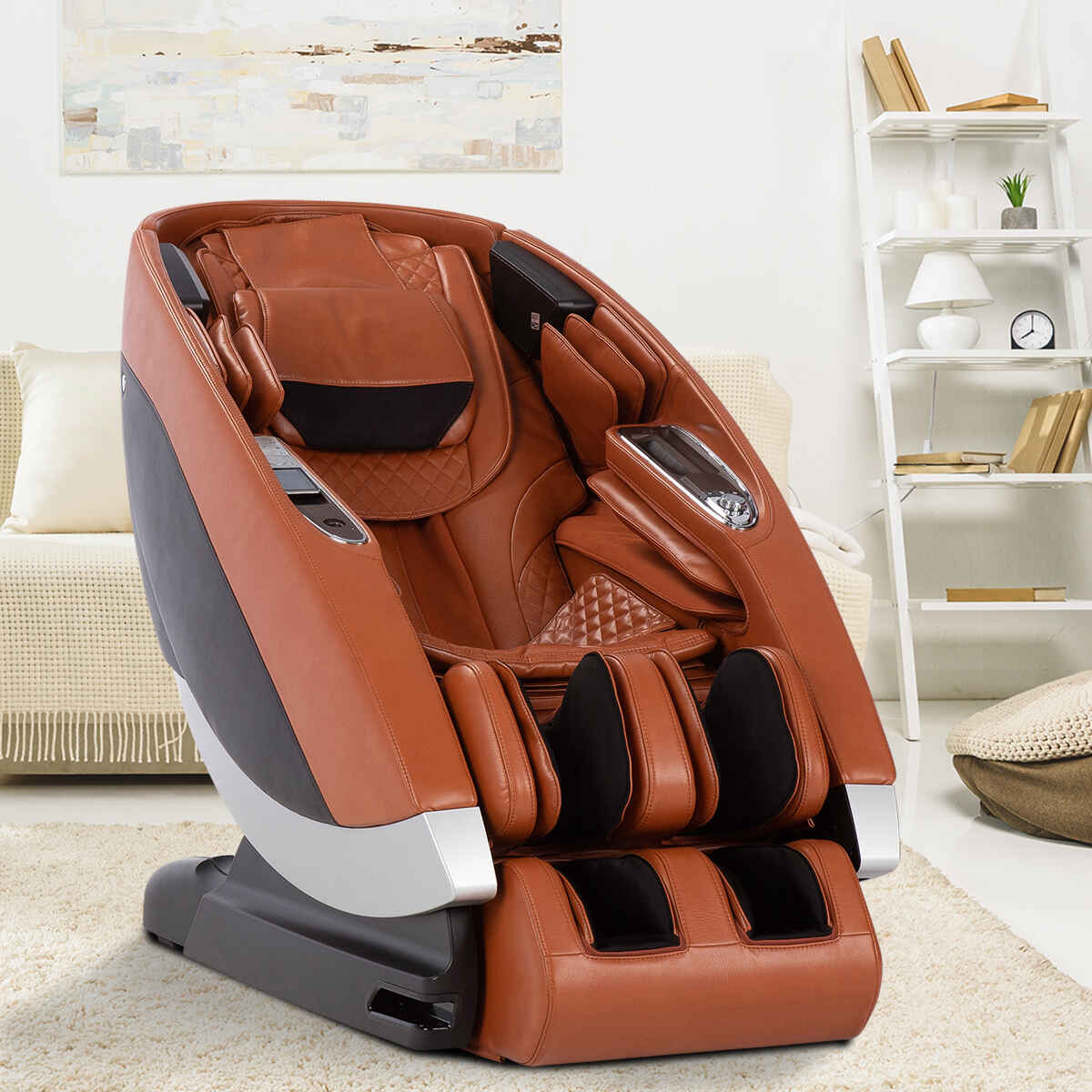
Super Novo
Super Novo is pure luxury and comes equipped with some of the best technology in the massage chair world. A few of the features that we're confident you'll love are:
- 3D and 4D massages
- Fingertip controls build into the chair
- 38 wellness programs
- Cloud Touch acupressure
- Dual lumbar heat
- Unibody track
- Zero gravity function
- Much more
If you want to know how to have a spa day at home with a single product, the Super Novo is it.
Click here to learn more about the Super Novo.
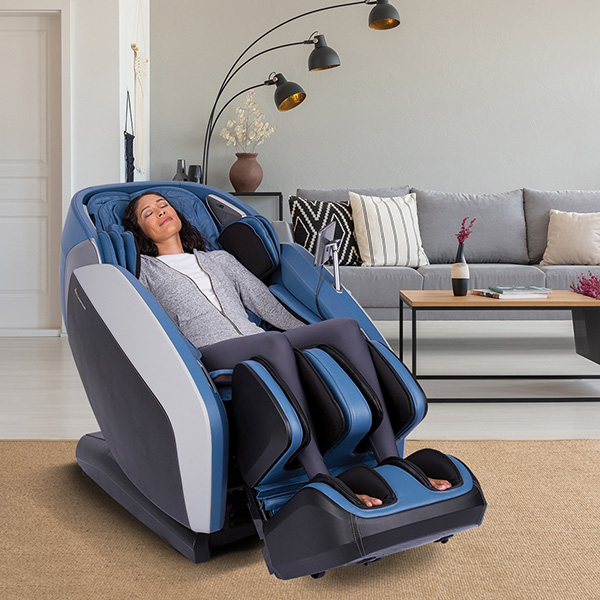
Certus Massage Chair
Certus is another excellent option for a vigorous, in-home massage that will leave you stress- and ache-free. Reliable and durable, this chair offers:
- 11 auto-wellness programs
- Dual lumbar heat
- Heated feet
- Foot and calf massager
- Zero gravity option
- Premium sound system
- So much more
The Certus is one of the best chairs in our lineup, and you'll be shocked by just how little room this chair demands to recline fully.
Click here to learn more about the Certus massage chair.
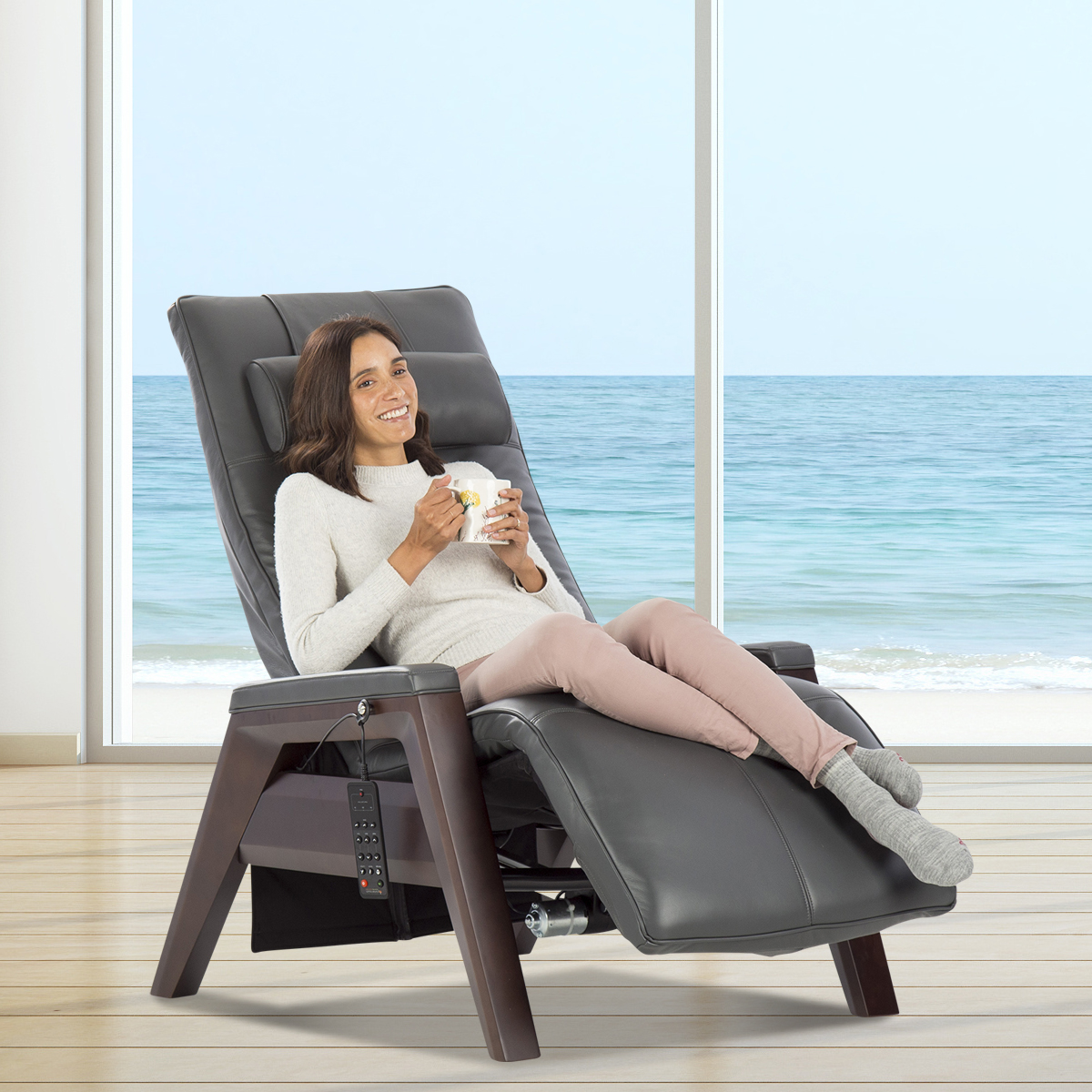
Gravis ZG Chair
Gravis is smaller than our other models, and it's a more affordable option for anyone on a tight budget. We love this chair because it offers a gentle massage and key features, such as:
- Multiple heat zones
- Targeted massage
- Air massage technology
- Robust, adjustability options
- Much more
You'll also love this chair's innovative app!
Click here to learn more about the Gravis ZG Chair.
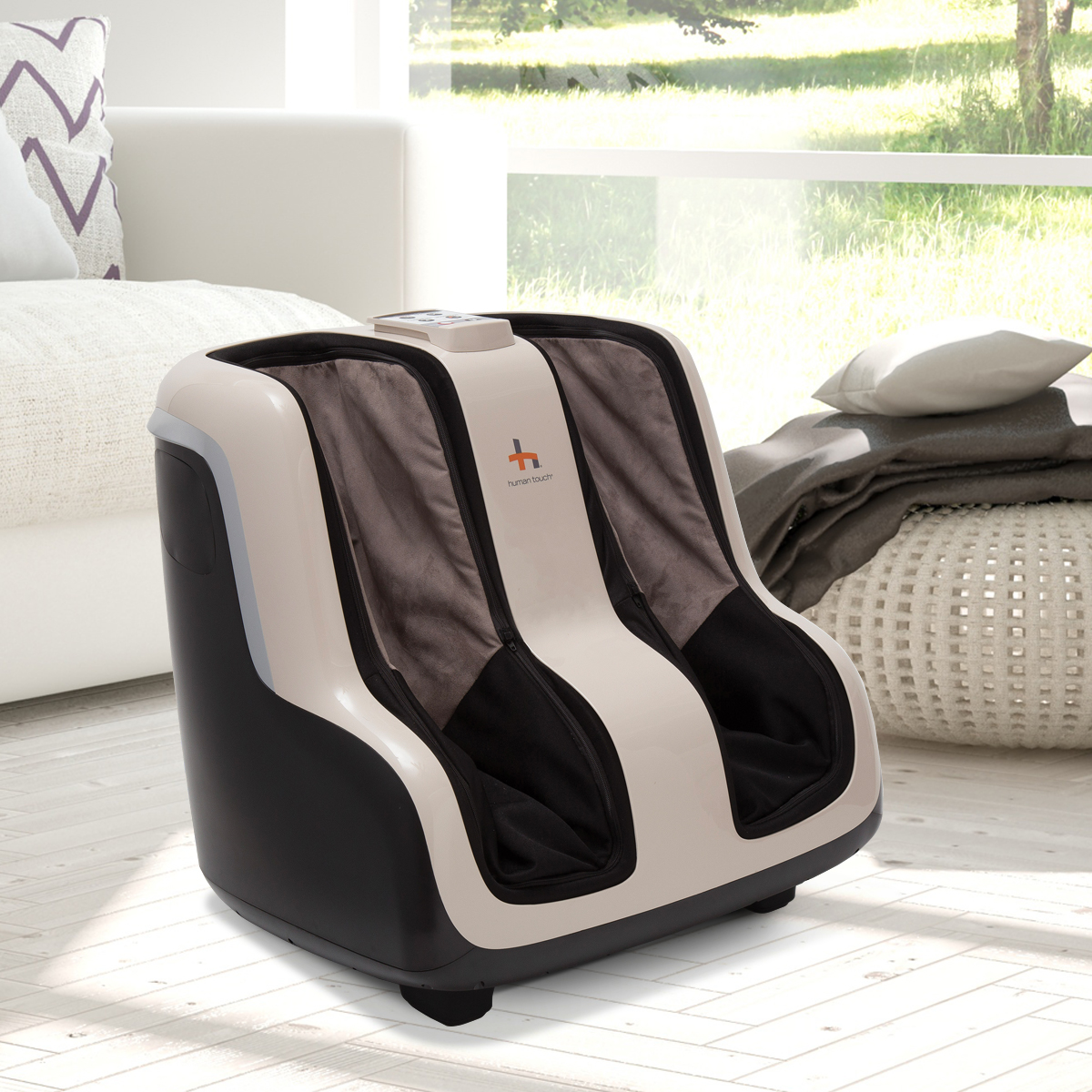
Wait! Why Not a Reflex Foot and Calf Massager Instead?
Want to know how to make a spa room at home on a budget? The Reflex SOL is a calf and foot massager that fits in nearly every spa budget. This foot and calf massager offers state-of-the-art features, including:
- Adjustable tilt option
- Intensity settings
- Under-foot massage rollers
- Warm air technology
- Much more
If you have a smaller space or just don't have the budget for a full chair, these foot and calf massagers are a great choice.
Click here to learn more about the Reflex SOL.
Of course, you can add in your own home spa ideas, such as adding in a fountain or some of the best at-home spa products that appeal to you the most.
Finally, now that you know how to make your home like a spa, there's one thing left to do: have a spa night at home. Grab your drink of choice, put on something comfortable and make your way into your own oasis.
This article seeks to unravel the many health complications caused by bad posture. We’ll identify the common practices that go unnoticed yet pose a risk to your mental and physical health.
Writen By Laura Gaskill, Houzz
Photo (Above): Louise de Miranda, original photo on Houzz
When you hear the word “retreat,” what comes to mind — writing in a cabin by a lonesome lake, engaging in spiritual study or practicing yoga on the beach? How about doing a retreat in your own home? It may at first seem like an improbable idea (although that yoga-on-the-beach thing sounds pretty good), but there are some surprising positives to crafting your own retreat at home. For one thing, it’s free. For another, you can decide exactly the sort of activities you want to focus on, including things that may not be combined in most retreats (novel writing and cupcake baking, anyone?). Check out these 10 steps to designing your own retreat in the comfort of your home.
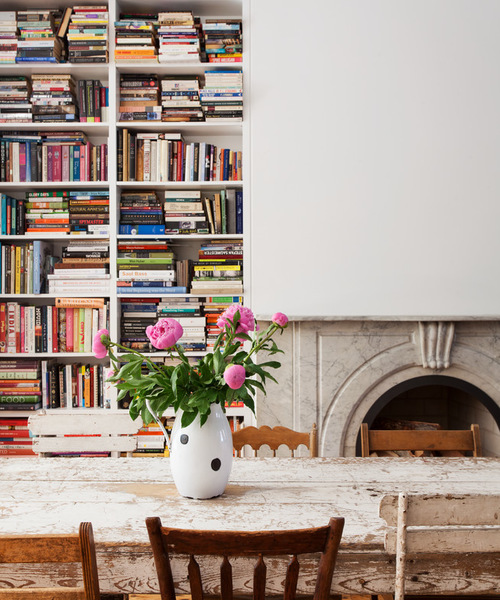 Bonaventura Architect, original photo on Houzz
Bonaventura Architect, original photo on Houzz
1. Decide on a focus. Are you craving a spiritual retreat? Time to work on your craft, write, do yoga or meditate? Make a short list of the things you want to incorporate into your retreat so you can start planning.
2. Get your household onboard. If you live with others, and especially if you have children, going on a retreat at home can be a challenge. Try to plan the retreat for a time when your family or housemates will be away, particularly during the day. At the very least, try to get everyone to agree to respect what you are doing. This includes not speaking to you too much if you decide to maintain silence (see No. 8) during your retreat. If you have children, it can be worthwhile to do a shorter (even a one-day) retreat when you know the kids will be out of the house.
3. Set an intention. An intention is different from a goal. A goal might be, “I will meditate two hours each day,” whereas an intention could be, “I will be mindful and appreciate each moment.”
To set an intention for your retreat, answer these two questions:
○ What do you hope to gain from your retreat?
○ What do you hope your experience will be?
Setting intentions before your retreat can help keep you focused on the experience you want to have.
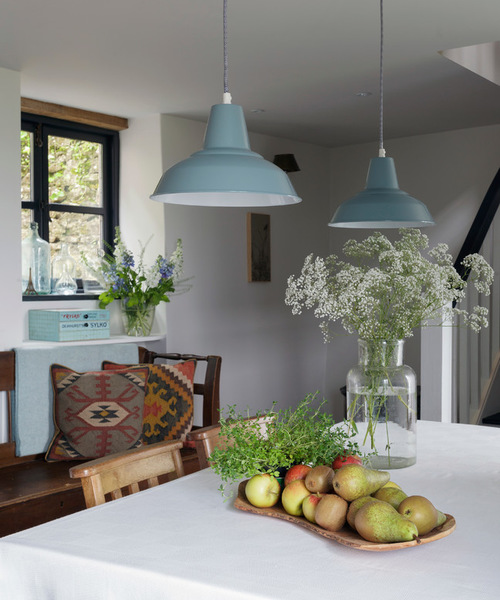 Nicola O’Mara Interior Design, original photo on Houzz
Nicola O’Mara Interior Design, original photo on Houzz
4. Shop for groceries and plan meals. Retreats you travel to, no matter what the focus, tend to offer fresh, healthful food — so try to offer yourself the same. Get the main work out of the way before your retreat begins, so you can focus on the good stuff.
5. Gather other materials. Depending on what sort of activities you will be focusing on, you may want to pick up books, instructional videos, craft supplies, notebooks and pens, a yoga mat or meditation cushions.
 The New Design Project, original photo on Houzz
The New Design Project, original photo on Houzz
6. Create a schedule. Any proper retreat has a schedule mapped out in advance, and there’s no reason you can’t do the same. Decide what time you would like to rise, eat, work on your project, read, have downtime and go to sleep each day. Of course, the beauty of having an at-home retreat is that you are free to leave your schedule as open or as structured as you like.
7. Prepare your space. There’s no need to go overboard cleaning and scrubbing, but beginning your retreat in a neat, clean home will help set a positive tone. Plan to spend a few hours getting rid of clutter and cleaning up before you begin your retreat.
Pay special attention to clearing away clutter and electronic devices in the bedroom so you can sleep restfully. And elsewhere in the house, put away anything that reminds you of work or things you may be feeling stressed about.
 rigby & mac, original photo on Houzz
rigby & mac, original photo on Houzz
8. Try silence. Consider going without speaking during some or all of your retreat — you may be surprised how refreshing it can feel to get a break from constant chatter.
Of course, the more people in your household, the more difficult it will be. Perhaps someone else would like to participate in silence with you, or you can enjoy a silent break during the times you have the house to yourself. And, of course, talk if you really need to!
 Nicola O’Mara Interior Design, original photo on Houzz
Nicola O’Mara Interior Design, original photo on Houzz
9. Unplug. If there is one thing that seems to be a given at a retreat, it’s that you disconnect your devices. No going online and no checking your phone or tablet. If you are used to being on your devices frequently, it can be a hard habit to break, but it’s worth trying!
10. Consider your media consumption. In addition to what you might be used to seeing online, consider taking a break from the magazines, newspapers and books you usually read. Be intentional about the material you choose to read or watch during your retreat. If you want to read a book or watch a film, pick one that meshes with the intention you set for the retreat.
More from Houzz:
Stock a Pantry Cabinet With Healthy Snacks
How Home Can Help You Recharge
Lamps to Brighten Your Reading Nook
Looking for a way to enjoy daily full-body massage on your retreat? Try the Human Touch Novo XT massage chair:
By increasing oxygen-rich blood to tired, sore muscles, Novo XT helps to restore your natural well being. You can also bet that the sleek, innovative design will serve as a conversation piece that captivates attention like that of your favorite sports car.
Once you’ve rejuvenated both your body and mind, you’ll experience a heightened sense of confidence, motivation, and clarity—all the tools you need be your best and keep your edge over the rest of the pack.
Meditation can sometimes be misunderstood by people who feel that it seems inactive or boring. Other people are so used to the daily buzz that they don’t think it’s possible for them to sit silently for a period of time. Others still feel like they’re just TOO busy to meditate, even for a few minutes. However, there are a multitude of ways to meditate, with options that can fit just about any lifestyle. Here are a few forms of meditation for practitioners of any concentration level, schedule, and interest in meditative spirituality.
Loving-Kindness Meditation
This is the simple practice of directing well-wishes toward other people. To practice, sit comfortably with your eyes closed, and imagine what you want for your life. Start by directing phrases at yourself, such as “I wish to feel more peace.” After this, you extend well-wishes toward other people, and determine what positive hopes you have for them. These visualizations go beyond just friends or even people you feel neutral about, and reach out to people whom you don’t generally care for, in order to spread happiness to your surrounding world. This type of meditation has been shown to increase positivity, empathy, and kindness. Best for: Those struggling with low self-esteem; those looking to become more empathetic to people around them.
Moving Meditation
There are several forms of moving meditation that can help people who like to multitask, or those who struggle sit still. Exercises such as Yoga or Tai Chi encourage people to move their bodies at a deliberate pace, all while focusing their attention inward in order to really connect their minds and bodies as one. Even walking can be a means of meditation if you simply focus your attention on your mind and body. During any form of moving meditation, it’s important to keep the body in continual motion, in order to maintain the mind-body connection. Best for: Busy people; athletes.
Chakra Meditations
This style of meditation is centered on the idea that we are made of seven different “energy centers,” each of which is located in a different part of the body. These energy centers, or chakras, are associated with a different color, sound and purpose. Mediation involving one’s chakras often uses sound, touch, and visualization to hone in on a specific area of the body, and heal any issues or heavy emotions that dwell there. Many people who practice yoga believe in chakra meditation, and use it as a supplement to their yoga practice. Best for: Spiritual individuals; yoga practitioners.
Vipassana Meditation
Also called “Insight Meditation,” Vipassana Insight Meditation is the practice of paying close attention to sensation. It emphasizes awareness of breath, and teaches you to focus your attention on the thoughts that arise while you breathe in and out through the nose. No matter your thoughts, it asks you to allow them to flow through you without taking them too seriously, and then gently return your awareness back to your breath. This is the most common type of meditation that is offered at silent meditation retreats. Best for: Beginners; those looking to attend a silent retreat.
Open Monitoring Meditation
Experienced practitioners see this as an actual purpose to meditation, and not a form of meditation itself. Open Monitoring Meditation encourages turning their focus on their awareness itself, rather than focus on one’s breath or their thoughts. One way to accomplish this might be to sit or lay down, and simply listen to the goings-on in the world around you. You might notice the weight of your body as it distributes onto your chair or the ground, or you can listen to the sounds outside of your window that were only background noise until now. Your state of awareness is heightened as you really start to pay attention to each passing car, gust of wind, or cool breeze. This type of meditation really enhances your connection to the world around you, and helps to calm your mind as you own racing thoughts become more still. Best for: Busy thinkers; those who struggle to sit still.




